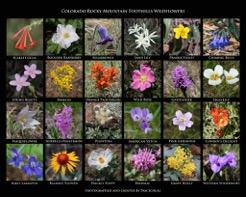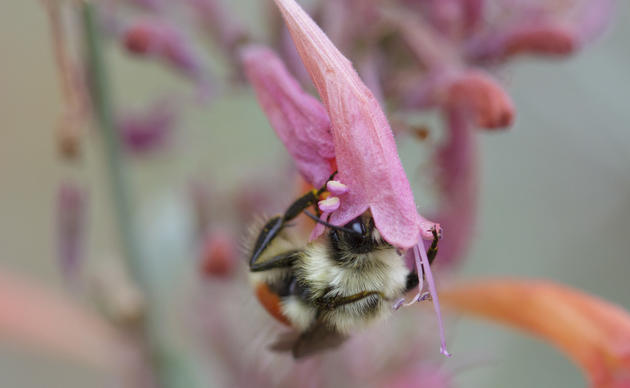By: BBB Seed
Planting a Wildflower Meadow
One of the most natural and delightful habitats for pollinators is a wildflower meadow. With a wide variety of flowers blooming at different times, there's always something for bees and other insects to eat. An established wildflower meadow doesn't require weekly mowing or nearly as much water as a traditional monoculture lawn.
So how do you set up something like a wildflower meadow that took nature hundreds of years to nurture in your own backyard...something that will look beautiful preferably this year?
There's the overnight version, like the makeover shows that install an entire landscape in a weekend. This involves buying all the plants, and bringing in the labor to prep the site. Unless you have already found the pot of gold at the end of the rainbow, this is a pretty expensive proposition. And you only get the plants that happen to be available the weekend you plant. These are often hybrids or patented plants designed to look good in pots or a heavily irrigated garden. Many commercially purchased plants have been grown with pesticides that are lethal to the very pollinators we want to attract.
So the smart gardener's approach to a natural and native wildflower meadow is to plant by seed. We have all had our gardening failures where we throw out a bunch of seeds thinking it will grow by magic into a lush garden only to go out in July and find a bunch of weeds have taken over. So what's a habitat lover to do?
There are several easy secrets to successfully growing a wildflower garden from seed in just one season.
Native Plants adapted to your region
The selection of what to grow is really crucial to your success. You want the kinds of flowers that naturally do well in your environment....the ones you would see if you went out for a hike. These are plants that have evolved with the land...ones that are native to your region and that have developed mutual relationships with the native pollinators. They are also the plants that have adapted to living with your weather conditions. Minus 20 degrees temperature in the winter? Long hot summer? That's not a problem for flowers that have adapted to living in the plains or foothills of Colorado. If they hadn't learned to be tough, they wouldn't be growing in Colorado. One of the things we learned when we started gathering mixes of wildflower seeds was that you couldn't just use random wildflowers, but that each different geographical region had different flowers that did well. So when you get a wildflower mix for Colorado, it should have a different set of seeds than a mix for the Northeast or the Southeast. Some of the plants will be the same but many are quite different.

Decide on Just Flowers or Flowers and Grass
If you have a small area, you can just plant wildflowers for a big impact. But if your area is larger, a mix with native grasses will give you a natural habitat that mimics what you see in nature....grasses and flowers growing together. Pollinators love both and the grass helps preserve moisture in the soil.
A Well-Prepared Garden Site
So let's say you've moved into a new housing development or into an old established neighborhood that's had the same lawn since 1940. You can't just throw out the seed and water in. In the new development, you will get thousands of dandelions and nasty weeds like dock or bindweed that thrive in disturbed soil. In the old lawn, flowers will have a hard time competing with massive grass roots. So you have to lightly prepare the soil...No deep tilling....let's leave those weed seeds safely down below the light. You can put down cardboard or black plastic for a season to suffocate and kill what's growing there. Some people use grass mulches. Straw generally has lots of herbicides in it and isn't safe anymore. You can dig the big nasty weeds. You don't have to do lots of soil amendments. Wildflowers have learned to grow on lean soil.
Attention to Water Until the plants are Established
In nature, seeds have sat out for a year or more waiting for the right combination of snow cover or spring rain. This is why wildflowers are especially beautiful after a wet spring. To get your wildflowers going in just one season, you need to provide moisture in the form of regular irrigation or other water conservation techniques.
Ongoing Maintenance
A wildflower garden doesn't require as much work as a lawn or a vegetable garden but you still need to put some effort in. You especially need to make sure the weeds don't go to seed. You will also need to provide some supplemental water especially if you've chosen a mix that requires more water. Even the drought tolerant mixes will do much better if you give them a good drench during hot rainless months. Over time you may need to overseed as some flowers start to dominate. An extra packet of annual wildflowers every couple of years perks things up.
The Secret to a Beautiful Wildflower Habitat is do your best to mimic the situations the flowers grow in nature. When you are out walking in the wild, notice what kinds of conditions your favorite wildflowers grow in. Then go home and recreate that in your space.
Additional Resources




